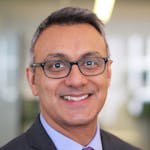People across America are using the Sustainable Development Goals (SDGs) as a road map to build back better by turning these global ambitions into local action.
As the official headquarters of the United Nations, and a leader in sustainability, New York City exemplifies the phrase, “Think globally, act locally.” Driving the city’s SDG progress is a dynamic team of women in the Mayor’s Office for International Affairs. We spoke with three of them to learn more about what inspires them to do this work.
Three years ago, New York made headlines when it became one of the first cities in the world to formally report on its local progress on the Sustainable Development Goals (SDGs) to the United Nations by submitting a Voluntary Local Review (VLR). The SDGs are a natural language for the city, which is home to diverse communities — including the world’s largest diplomatic corps — and which launched its own sustainable development plan, “OneNYC 2050,” focused on growth, equity, sustainability, and resiliency, several months before the SDGs were adopted in 2015. New York City helped to adapt the national tools for reporting SDG progress for cities and states and spurred an international movement, with more than 20 cities across over 15 countries signing a VLR declaration in 2019 to report on their own progress.
The VLR declaration was born within the Mayor’s Office for International Affairs, which cultivates channels of collaboration and connection between New Yorkers and their international peers. The office also administers the NYC Junior Ambassadors program, helping seventh graders learn more about the UN, the SDGs, and how their communities’ local challenges connect to the world. Through its Global Vision|Urban Action initiative, the office uses the SDGs to share its innovative sustainability work and exchange best practices with other cities and countries.
The importance of achieving the SDGs grew even clearer for New York City when it became the epicenter of the COVID-19 pandemic in the U.S. in March 2020. The haunting images of empty streets, supply shortages, and makeshift morgues in one of the world’s liveliest cities were just one part of the story. As in so many other places around the world, what New York’s pandemic experience illustrated in stark terms was that despite some progress, there are still alarming levels of inequality and disparities. At the same time, it reinforced the importance of local leadership as city governments are deeply connected to their communities’ needs and are usually the first responders to crises.
As NYC works to recover from the pandemic, it is taking these lessons to heart and placing the SDG ideals of equity and justice at the center of its approach.
Driving these efforts is a dynamic team of women in the Mayor’s Office for International Affairs. From advocating for girls’ and women’s rights to supporting underserved communities, they have arrived to their roles from diverse experiences where they have internalized the SDGs as an obvious blueprint toward a better future.
Get to know three of these women here, and learn more about why the SDGs matter to them:
1. PENNY ABEYWARDENA, Commissioner
Penny Abeywardena’s own personal journey is a testament to the power of the SDGs and their promise for dignity and justice for all. After she and her family arrived in the U.S. from Sri Lanka, she spent much of her youth undocumented and acutely felt the vulnerability that comes with such a status. That experience shaped Penny’s lifelong dedication to issues of social justice and sustainability, including programmatic work at Human Rights Watch, and later, the Clinton Global Initiative, where she championed girls’ and women’s rights.
When she was appointed commissioner at the Mayor’s Office for International Affairs in 2014, Penny quickly saw an opportunity to increase collaboration between her local agency colleagues and the international and diplomatic community in the city. As the UN made headway on establishing the SDG framework, it became clear that the Goals could be the perfect entry point to bring the two groups together around tackling poverty, inequality, climate change, and other common challenges.
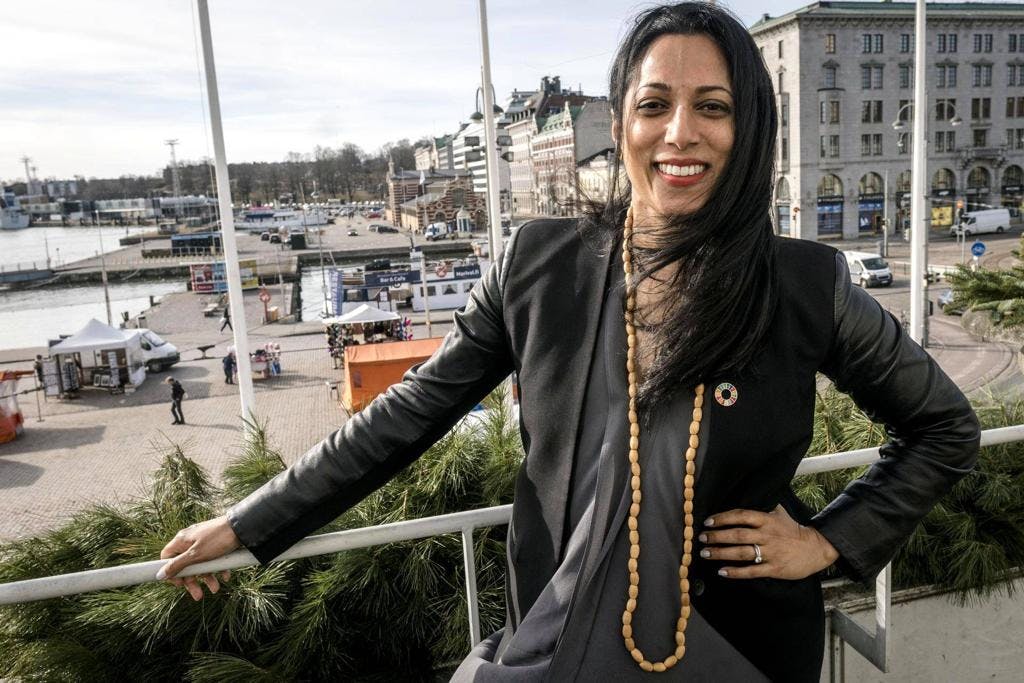
“We’ve worked closely with our colleagues throughout city agencies so that they understand how the SDGs are relevant to their work,” says Penny. “It’s this ability to connect beyond borders on best practices, using the SDGs as a common language and framework that’s been at the heart of our Global Vision|Urban Action platform.”
With a shared universal set of targets and vision for the future, New York stakeholders could exchange their experiences, challenges, and solutions with counterparts in cities around the world. Alongside the launch of the first VLR, for example, members of the UN diplomatic community were invited to see firsthand some of the local impact of NYC’s SDG work, including a visit to the largest recycling facility in the U.S. to understand how the city is tackling responsible consumption and production (SDG12), boarding a sludge vessel to learn more about the city’s clean water and sanitation efforts (SDG6), and taking a tour of a local community garden to explore life on land (SDG15).
In her seven years as commissioner, Penny has been able to see the powerful impact that cities can have on the front lines of propelling the SDGs forward, including through reporting on progress made toward the Goals.
“There are ways to be creative and use our partnerships and networks, and that’s what we want to create with this voluntary local review: to have local governments feel powerful in this work,” she says.
When the U.S. withdrew from the Paris climate agreement, for example, New York Mayor Bill de Blasio signed an executive order to commit the city to the agreement’s goals. His office later released a Paris Agreement-compliant plan — the first city in the world to do so — outlining exactly how it would decrease greenhouse gas emissions and reduce its carbon footprint. More recently, when New York was the epicenter of the COVID-19 pandemic, Penny and her team reached out to their network of foreign ambassadors and the UN for help and were able to secure millions of personal protective equipment and ventilators. The UN alone donated 250,000 face masks to support health workers across the city.
The pandemic “has one hundred percent highlighted the importance of local government action — for basic health delivery, and now for vaccines,” Penny said. “Last year, we saw a significant jump in cities and local governments wanting to join the voluntary local review declaration because COVID made it clear that the SDGs are an important framework for us to work within.”
The global nature of the pandemic was a wake-up call for many, showing how one problem in one corner of the world can quickly spread to affect everyone around the world. And for Penny and her team, this is why the SDGs resonate so much — they help connect the local to the global, and bring us together as part of one large community, fighting the same fight.
2. AISSATA CAMARA, Deputy Commissioner for Operations and Strategic Partnerships
For Aissata Camara, the most exciting part about her work in the Mayor’s Office for International Affairs is engaging with young activists and seeing how they translate the SDGs into their own lives. This is a natural extension of her yearslong advocacy on behalf of vulnerable populations, particularly young girls. Through an organization she started with her sister, Aissata has helped raise awareness around issues such as female genital mutilation, and she encourages other young people to do the same.
Aissata’s advocacy work prepared her for the first task on the job in the Mayor’s office six years ago: launching the Junior Ambassadors program, a challenge centered around how to bring the Goals into homes and into discussions around dinner tables across New York City.
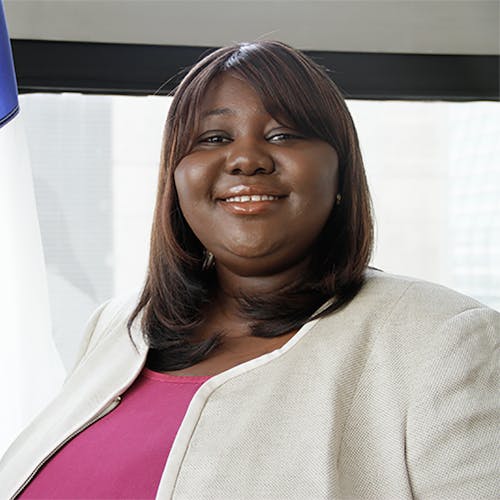
“I love being surprised at how creative these young people are when they create community activities,” she said. “Also when they actually start engaging with the SDGs, they don’t let it go — they take the SDGs with them to college and join clubs like Model UN.”
One Junior Ambassador group in South Bronx, for example, chose Goal 14: Life Below Water to tackle the pollution they saw in the river they walked past every day — one of the most polluted waterways in the city. For them, this was one of the most obvious SDG priorities, and they worked together to clean it up.
In her current role as Deputy Commissioner for Operations and Strategic Partnerships, Aissata helps localize the SDGs, engage city government experts’ voices in the process, and identify engagement opportunities between city agencies and the international community. Part of her job means showing city colleagues who are unfamiliar with the SDGs that their work — whether it is water and sanitation or parks and recreation —already helps advance the Goals, but that in using the framework as a language, they can take it one step further and connect to their international colleagues. Aissata says that when her colleagues saw this opportunity to be able to engage with international peers, they grew more excited.
“Everyone wants to have better health. Everyone wants to be able to have a quality education. Everyone wants to be able to not face inequalities or face discrimination,” Aissata says. “The Sustainable Development Goals give us the language to be able to put these hopes and dreams into words.”
3. ONEIKA PRYCE, Strategic Relationships Associate
Oneika Pryce’s first exposure to the SDGs was in an academic setting. It was not until a 2019 internship in the Mayor’s Office for International Affairs that she began to grasp how they could be applied to real life.
“Everyone wants to achieve the 17 Sustainable Development Goals, but when you read about them, you ask yourself, ‘Is this actually feasible?’” says Oneika. “When you’re viewing them from a more localized perspective, then you can actually see that there are steps to get towards the goal.”
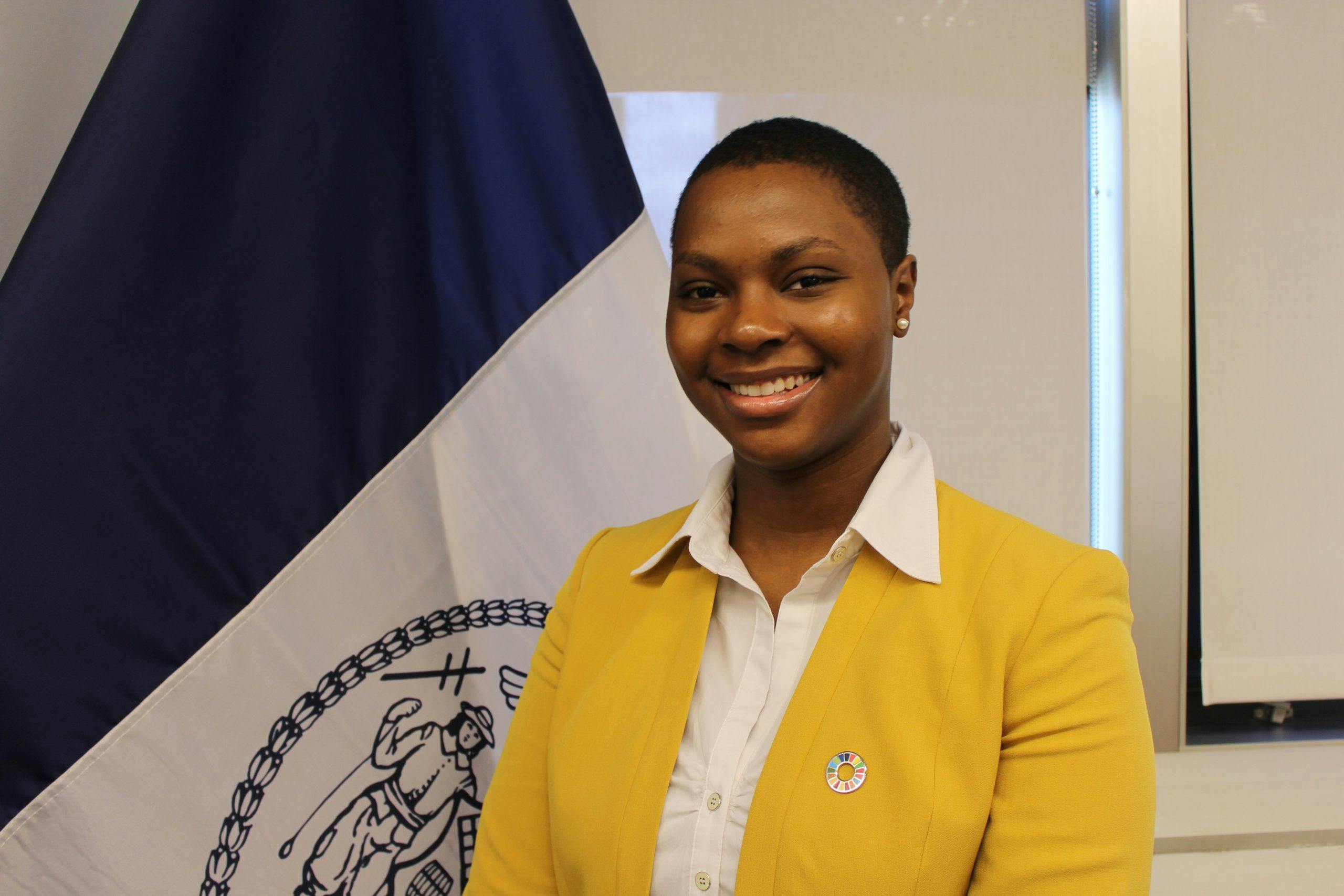
After her internship and only a few months before the start of the pandemic, she was hired as a strategic relationships associate to help implement the Global Vision|Urban Action (GV|UA) program. Part of Oneika’s work has been showing New Yorkers the applicability of the SDGs in their own lives, thereby changing the possible misconception that the framework is strictly for the “developing world.” During the pandemic, that meant setting up food hubs to help local communities overcome food insecurity or providing access to tablets and computers for students facing technological difficulties.
It also meant that Oneika’s parents finally understood what she did every day at work. “My parents are immigrants from Jamaica, and when I first started, they had no clue what I was doing,” Oneika says. “I had to bring it to their personal experience, and talked about the value of the SDG framework in building educational programs or improving agricultural practices — that made it more tangible for them.”
Explaining how the SDGs connect to the real world to her parents has given Oneika helpful practice to build relationships with city representatives. And that has become her favorite part of the job: cultivating personal connections around the Goals to show how NYC can teach and learn from other cities — those with as few as 10,000 people all the way to megacities.
For each of these women, the SDGs are more than just targets or numbers — they are personal. From working to eradicate poverty in New York City to protecting women against domestic violence, the SDG framework is a clear game plan for the city — and the world — to move toward a more just, equitable future. These three women in the Mayor’s Office for International Affairs are especially heartened by the momentum that their city’s VLR has helped achieve.
With more than 200 cities and subnational governments around the world and in the U.S. now signed on to the Voluntary Local Review Declaration, the SDGs are quickly spreading as the language of choice to deliver progress. This momentum comes as all countries are simultaneously faced with the monumental challenge of mapping out COVID-19 recovery.
Luckily, there’s already a road map for that.
This conversation is part of a larger project launched by the UN Foundation and the Brookings Institution to build and support American leadership on the SDGs.
Sign up for our monthly newsletter to receive information about upcoming events, news, and stories that highlight American Leadership on the SDGs.


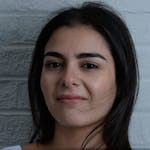
 View All Blog Posts
View All Blog Posts